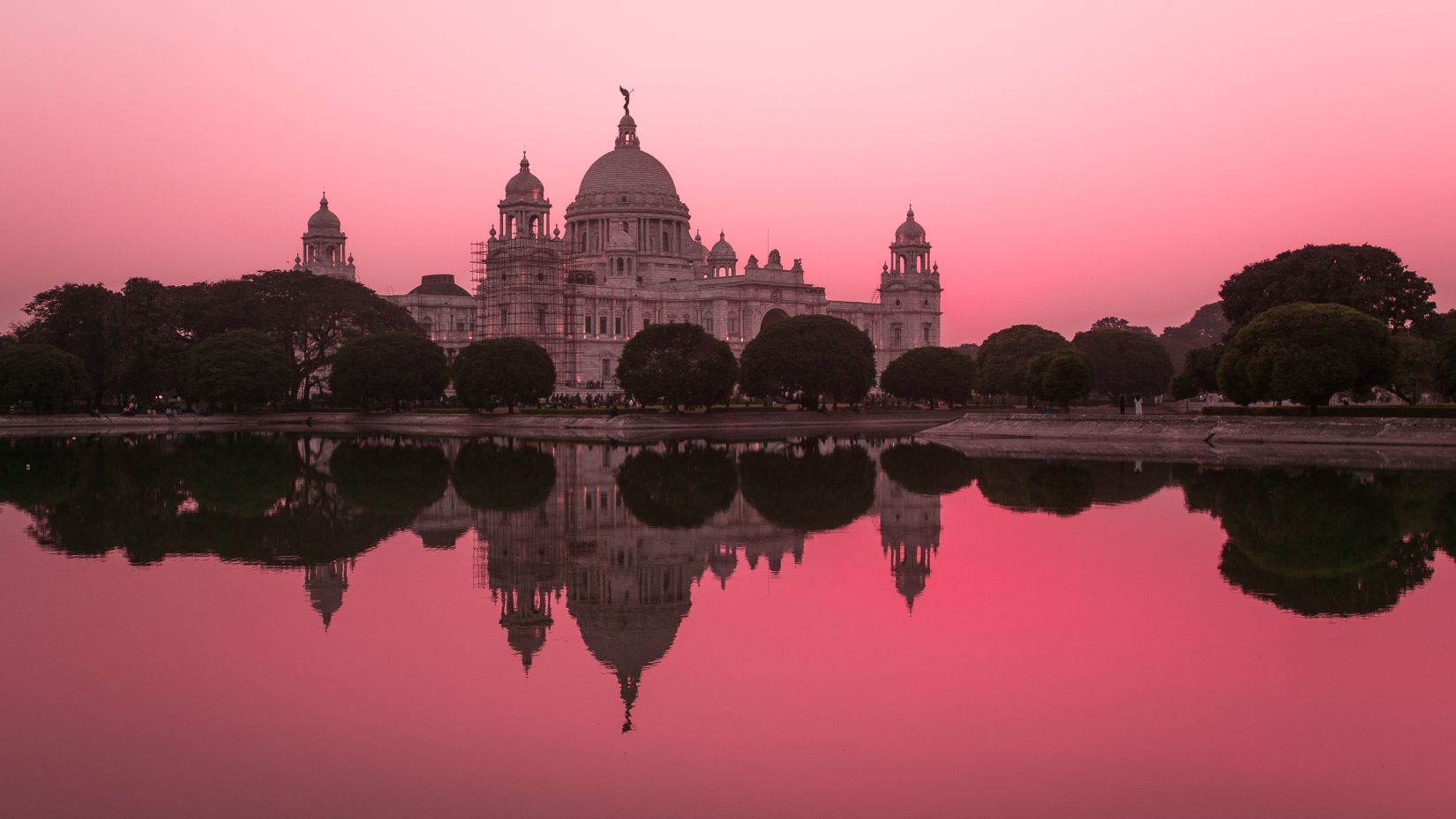- Unlock Better Sleep and Reduced Pain with This Simple Ayurvedic
- Yoga Nidra for Sleep: How to Practice It in a Retreat Setting
- Monsoon Magic: Discover Kerala's Infinity Pool Retreats
- Inspiring Wellness Journeys for Couples Yoga Everywhere!
- Ragi Puttu: A Nutritious Indian Breakfast Delight!
- Journey Through Kannur: Perfect Monsoon Getaways
- Monsoon Wellness
- Ayurvedic Guide to Summer Wellness
- Top 10 Ayurvedic Foods for Summer Health
- Living the Water Conservation Way
- Why you need a Ayurvedic solace in Kerala ?
- Beyond the Room: How Niraamaya Champions Local Experiences
- A Tale of Two Indian Spots for Valentine's Day
- Unlock a Stress-Free Life: 6 Reasons to Choose Wellness Retreats
- From Ayurveda to Modern Medicine: Hibiscus Across the Globe
- The Ayurvedic Wellness : 7 Tips to Transform Your Health
- A Year of Self-Care: The Ultimate Guide to Rejuvenation Holidays
- Experience the Hornbill Festival: A Cultural Marvel
- How Nature-Friendly Rooms Enhance Sleep Quality
- Wellness Through Design
- Beyond the Boardroom: A Guide to Corporate Wellness Success!
- Kannur: A Wellness Oasis in Kerala
- No-Fire Cooking: A Sustainable and Delicious Culinary
- A Diwali Trip Guide to Kerala
- Ghee, An Ayurvedic Superfood for Auspiciousness and Nourishment
- Unlocking the power of Better Sleep: A Path to Wellness
- Pomegranate Juice: 10 Health Benefits of the Red Pearl Fruit
- The Ayurveda Way: 10 Power Foods for Diabetes
- Roar for Tigers: The world needs more species!
- Experience Niraamaya Retreats Private Residencies At Least Once!
- Why India Is Our New Favorite Place for Medical Tourism
- 5 Reasons to Visit Niraamaya Retreats in Monsoon
- Complete Guide to Surviving Monsoon Depression with Niraamaya
- Embrace the Healing Power of Karkidaka Chikitsa
- Embracing the Kaleidoscope of Love
- Discover the World of Teas and Tisanes
- The Jackfruit Biryani Phenomenon: Why Everyone is Talking About
- From Limiting Beliefs to Limitless Possibilities
- From Chaos to Calm: Celebrating Stress Management Month
- Small Steps, Big Impact: Celebrating Earth Day at Niraamaya Well
- Make a Splash this Summer in Niraamaya’s Private Pool Villas
- Niraamaya Wellness Retreats’ Mussels Ulathiyathu
- Locally Sourced, Freshly Prepared: Exploring Zero-Mile Cuisine a
- Finding Your Zen: Ayurvedic Techniques for a Calmer Mind
- From Farm to Table: Embracing the Slow Food Movement
- Spice Up Your Seafood with Niraamaya's Squid Pepper Recipe
- Plan your next Wellness-cation with Niraamaya Retreats
- Navigating the World of Ayurveda
- Bitter but oh-so-good: Pavakka Thoran
- Unleash Your Inner Wellness Warrior
- The Ultimate Relationship Booster
- Uncovering India's Gems: A Zodiac-Based Guide - Part 2
- Uncovering India's Gems: A Zodiac-Based Guide
- Top Destinations to Visit in 2023 with your Partner
- Safety First: A Guide to Solo Travel for Women
- The Secret to Niraamaya’s Signature Travancore Fish Curry
- Capture the Holiday Magic With Niraamaya's Festive Offerings
- The Ultimate Guide on how to end the year in style at Seychelles
- Athirappilly 101: A beginner's guide on how to have an unforgett
- 7 Reasons Why Stress Management is the Key to a Healthier Life
- Check out the Health Benefits of these 10 Ayurvedic Herbs
- Start Your Wellbeing Journey with These 6 Simple Tips!
- Express yourself via the Art of Journaling
- Leverage cutting-edge tech for advanced wellness
- Boost your post-COVID recovery with Niraamaya
- Make A Positive Change With Our Simple Summer Swaps
- Five tips to help you maintain good health during summer
- 5 Must-Do Wellness Tips In 2022
- Vegan vs. plant-based food: All you need to know
- Retreat into the picturesque hills to take a luxurious break
- Our tips to tackle Technostress
- Functional Medicine: The holistic and natural approach
- 8 Ways to Overcome Stress at Work
- The Rasayana Therapy – Relax and Rejuve Program
- Yoga packages at Niraamaya Wellness Retreats
- Why you must visit Vizhinjam
- 10 ways to enjoy the Niraamaya Retreats as a family
- Dishes you just can’t give a miss at Niraamaya’s Backwaters
- The Art of Now
- How Ayurveda keeps your skin glowing
- Experience the power and beauty of southwest monsoons
- Feel the perfect harmony of earth’s elements
- How to experience the magic
- Nine gingery health benefits
- This Goa Will Fill Up Your Soul!
- Thiruvananthapuram: Top attractions
- Hotel Rooms Just Got 10% Cheaper With GST Rate Cut
- Food Traditions: The Onam Sadhya
- Niraamaya Retreat’s Executive Weight Loss Program
- Photogallery: The luxury suites at Niraamaya Surya Samuda
- Best of the backwaters
- How Panchakarma will help deep cleanse your body
- And we have scored big once again!
- Luxury By Design
- Niraamaya Retreats wins Best Hospitality Architecture Award 2019
- Niraamaya Spa wins the prestigious Luxury Ayurveda Spa Award
- Gourmet offerings at Niraamaya Retreats Backwaters & Beyond
- Creating Sustainable Livelihoods
- Healing Wellness Breaks at Niraamaya Backwaters & Beyond
- 10 reasons why Ghee is known as India’s very own super-food
- Cuisine with a wellness soul
- Kerala’s culinary traditions come alive at Niraamaya Retreats
- The Golden Spice
- Finding Shangri-La
- Everything you want to know about Yoga’s origin and evolution
- All Things Wild and Beautiful
- Tropical Paradise in God’s Own Country
- Healing Holidays for the Mind, Body and Spirit
- Floating over a forest canopy in a verdant green oasis
- A superlative spa, set amidst a lush forest
- An ancient village with horn houses and terraced fields
- Niraamaya Retreats: A unique blend of luxury hospitality
- Cruising Lake Placid
- Why Ayurveda could be your miracle cure?
- An ode to Kerala’s Tharavadus
- Lakeside Luxury at Niraamaya Retreats – Backwaters & Beyond
- Breaking through with ONV’s Leadership Retreats
- Ayurveda: When all you have are three days (or five)!
- Kovalam adjudged ‘India’s Best Wellness Retreat’
- Wellness in Nature: It Heals, Restores and Revives
- Changing Wellness Trends of 2021
- Ghee, An Ayurvedic Superfood for Auspiciousness, Nourishment, an

James Surowiecki, an American journalist rightly quoted ‘’Medical tourism can be considered a kind of import: instead of the product coming to the consumer, as it does with cars or sneakers, the consumer is going to the product ".
Worldwide there has been a real concern over healthcare and well-being, especially among developed nations. Travellers from Finland, the United States, Sweden, and Denmark are increasingly seeking health and wellness as the ultimate status and personal success symbol.
Current trends in the medical sector communicate that medical tourism is on a high-growth path in the Indian subcontinent. India’s focus has always been developing and providing healthcare services at an affordable price. With the world-class hospital infrastructure, highly skilled doctors, cost-effective treatments, and personalized care that hospitals here have, it’s no wonder that people from all around the globe flock to India to get medical attention.

Here are a few reasons why medical tourism in India is a boon to global travellers:
The nation’s cost competitiveness and availability of skilled labour are also making it a favourable destination for medical tourism. The country offers a complete package of medical treatment with a unique travel experience, exploring historical sites, indulging in traditional practices, and immersing themselves in the vibrant Indian culture. Medical treatments in India can be a fraction of the cost in comparison to other developed countries, making it an appealing alternative for patients looking for economical healthcare.
The Indian government is easing restrictions on citizens of many countries, making it easier for them to travel to India, visa-free, and with fewer restrictions. The Govt of India, The Ministry of Health and family welfare, and the Ministry of Tourism are focusing on making India a more prominent destination. For this purpose, a medical visa has been introduced. Which allows, a medical tourist to be in India for a specific period. A visa on arrival is granted for citizens from a few countries, letting them stay in India for 30 days.
Despite linguistic diversity,English is one of the most popularly used languages in India. Knowledge of English, a global language, makes communication easy with foreign patients. Also, Indian hospitals are bringing in translators for non-English-speaking foreigners. This global language is widely spoken and understood by healthcare professionals, especially in urban areas and medical facilities catering to international patients. This linguistic advantage facilitates effective communication between foreign patients and medical practitioners, ensuring a smoother and more comfortable healthcare experience.

The country has the infrastructure to provide high-quality treatment using the latest technologies and techniques. The Indian healthcare industry today caters to about 1.25 billion Indians and people coming from Africa, the Middle East, and SAARC countries. The nation caters to the healthcare needs of a population of almost 2 billion people globally. India gets high-value patients for surgeries in key specialities such as organ transplants (liver, heart & lung, and kidney), neuro surgeries, cardiothoracic surgeries, oncology, orthopaedics, and many others. These acquisitions are further going to bring the very best in technology, clinical and managerial expertise in line with the best global practices, thus further enhancing the attractiveness of the Indian medical tourism industry.
Global companies are well-equipped and have signed a health plan for sending employees abroad including India, Malaysia, Thailand, and Singapore, where they could save over 80% on the cost of medical procedures. India has become a top health tourism destination for high-end surgeries at inexpensive prices. Sending employees to India for healthcare treatment can have a huge impact on their occupational development and help boost a business’s profile and standing overseas.
Our unique knowledge and position in traditional medicine is another advantage that needs to be adequately marketed to the world. People looking for holistic and alternative treatments are drawn to India’s ancient healthcare systems, including Ayurveda, Yoga, and Naturopathy. Ayurveda offers a holistic, all-natural method of healthcare that emphasizes disease prevention. Popular destinations for medical traditions in India include Kerala, known as the "Land of Ayurveda," where visitors can experience authentic Ayurvedic treatments amidst serene backwaters and lush green landscapes.
As you can see, India is becoming a medical tourism hub for the world, serving, and saving millions of lives each year. A unique blend of integrated medicine is being created where patients benefit from standardized traditional and modern medical treatments, across pre, during, and post-surgery.
Hospitals are open enough to provide care much more rapidly than in Western nations. This can ensure that you receive top-quality treatment before conditions get worse and cause more side effects. This is a massive plus for many people from Western nations where waiting lists are often long. Plus, the money they save makes it even more of an obvious choice about where to choose treatment in the future. These all work towards making India a preferred medical tourism destination. If you are looking for treatment abroad, choosing medical tourism in India will be a great choice.